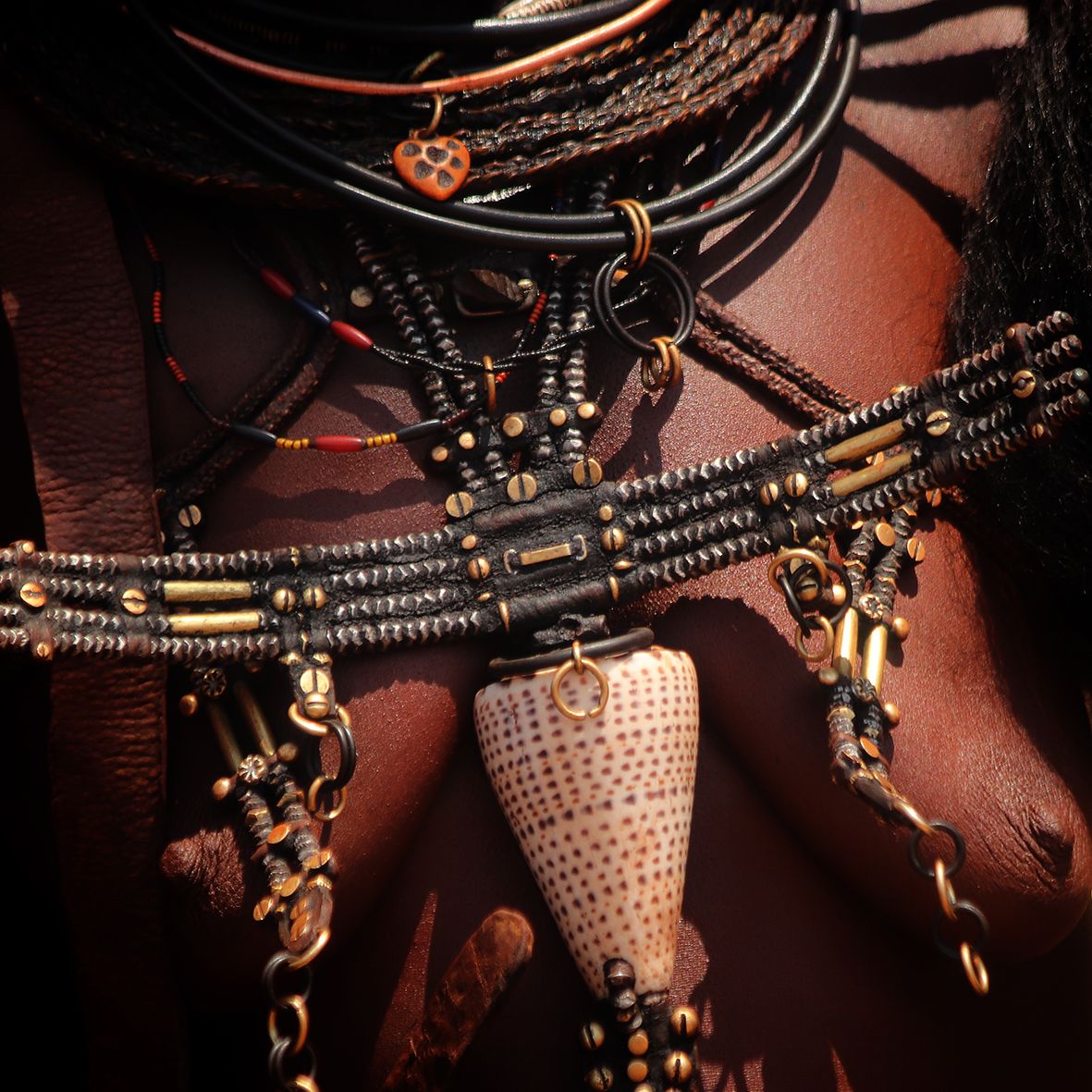HIMBA AND THEIR CULTURE
The Himba (also called Ovahimba) are a semi-nomadic people who live mainly in northwestern Namibia, in the remote Kunene region (formerly Kaokoland) and in southern Angola. It is estimated that there are approximately 50,000 Himba people living there.
The Himba tribe is known for their unique traditions and lifestyle, which they have managed to preserve despite modern influences.
One of the most striking features of the Himba is their grooming and beauty ritual. Himba women cover their skin daily with a mixture of red ochre and fat, a cream called otjize. This gives the skin a reddish hue, which is seen as a symbol of beauty and fertility. It also protects against the sun and insect bites. Their braided hair is covered with the same mixture, which indicates their status in the community.

The Himba live in small villages with huts made of branches and mud. They are mainly engaged in animal husbandry, especially cattle and goat herding, which play a central role in their culture and economy. Their diet consists mainly of milk and maize meal, sometimes supplemented with meat on festive occasions.
Himba culture is based on a patriarchal system, but with matrilineal succession. This means that property and status are inherited through the mother’s line. However, men are usually the leaders in the family and community. Polygamy is common and marriage is seen as an important social bond.

The Himba believe in a supernatural force called Mukuru, which is seen as an ancestral spirit that influences daily life. Ancestors play an important role in their beliefs and spiritual practices. The Himba have sacred fire rituals, in which they communicate with their ancestors daily through a fire that is never allowed to go out.
Although the Himba’s traditional way of life has withstood many external influences, it is now increasingly under pressure from modernization, education and economic development. Tourism plays a growing role in their community, as their culture and lifestyle are often admired by outsiders. The Himba are a fascinating people who are strongly rooted in their traditions, with a deep respect for their ancestors and nature.

Himba women never wash themselves but take a smoke bath every day. They burn aromatic herbs and plants. Then they sit over the smoke to ‘steam’ their bodies. This smoke kills bacteria and prevents unwanted odours, keeping them clean without using precious water.



